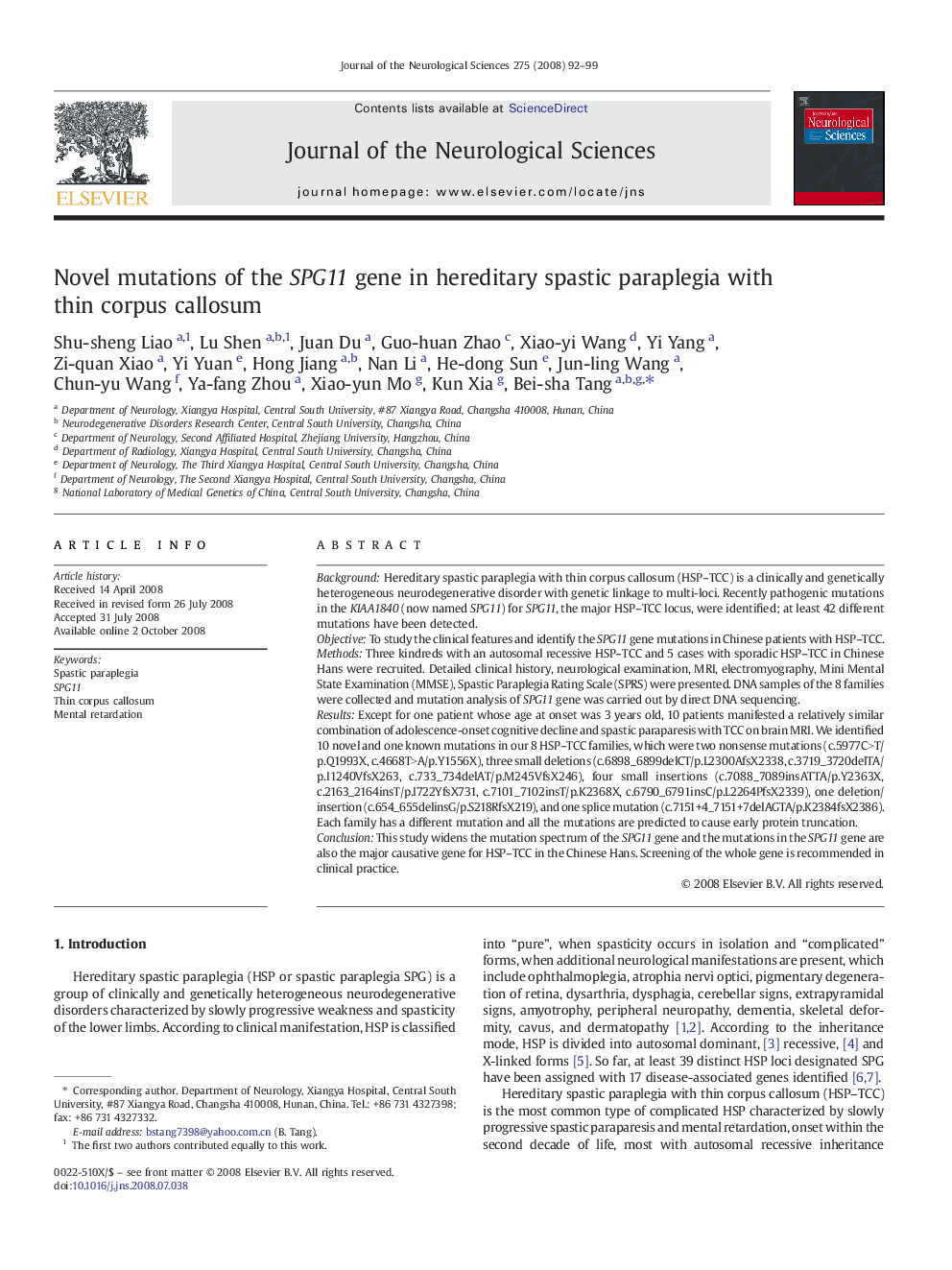| کد مقاله | کد نشریه | سال انتشار | مقاله انگلیسی | نسخه تمام متن |
|---|---|---|---|---|
| 1915602 | 1535187 | 2008 | 8 صفحه PDF | دانلود رایگان |

BackgroundHereditary spastic paraplegia with thin corpus callosum (HSP–TCC) is a clinically and genetically heterogeneous neurodegenerative disorder with genetic linkage to multi-loci. Recently pathogenic mutations in the KIAA1840 (now named SPG11) for SPG11, the major HSP–TCC locus, were identified; at least 42 different mutations have been detected.ObjectiveTo study the clinical features and identify the SPG11 gene mutations in Chinese patients with HSP–TCC.MethodsThree kindreds with an autosomal recessive HSP–TCC and 5 cases with sporadic HSP–TCC in Chinese Hans were recruited. Detailed clinical history, neurological examination, MRI, electromyography, Mini Mental State Examination (MMSE), Spastic Paraplegia Rating Scale (SPRS) were presented. DNA samples of the 8 families were collected and mutation analysis of SPG11 gene was carried out by direct DNA sequencing.ResultsExcept for one patient whose age at onset was 3 years old, 10 patients manifested a relatively similar combination of adolescence-onset cognitive decline and spastic paraparesis with TCC on brain MRI. We identified 10 novel and one known mutations in our 8 HSP–TCC families, which were two nonsense mutations (c.5977C>T/p.Q1993X, c.4668T>A/p.Y1556X), three small deletions (c.6898_6899delCT/p.L2300AfsX2338, c.3719_3720delTA/p.I1240VfsX263, c.733_734delAT/p.M245VfsX246), four small insertions (c.7088_7089insATTA/p.Y2363X, c.2163_2164insT/p.I722YfsX731, c.7101_7102insT/p.K2368X, c.6790_6791insC/p.L2264PfsX2339), one deletion/insertion (c.654_655delinsG/p.S218RfsX219), and one splice mutation (c.7151+4_7151+7delAGTA/p.K2384fsX2386). Each family has a different mutation and all the mutations are predicted to cause early protein truncation.ConclusionThis study widens the mutation spectrum of the SPG11 gene and the mutations in the SPG11 gene are also the major causative gene for HSP–TCC in the Chinese Hans. Screening of the whole gene is recommended in clinical practice.
Journal: Journal of the Neurological Sciences - Volume 275, Issues 1–2, 15 December 2008, Pages 92–99